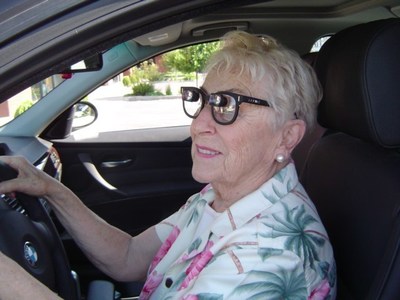Low vision doesn’t have to mean losing the privilege of driving a car. That’s the position of the International Academy of Low Vision Specialists (IALVS), an organization committed to helping people realize there is “life after vision loss.” As part of fulfilling that mission, IALVS provides information on Department of Motor Vehicle (DMV) vision requirements in all 50 states, plus Washington, DC.
“In our culture, driving is a symbol of independence,” says Dr. Richard J. Shuldiner, low vision optometrist and founder of the IALVS. “Sadly, low vision often results in people either losing their license or being unable to renew their license. Older individuals are especially vulnerable, as the loss of independence can lead to depression and poor health outcomes. We want everyone with low vision to know there is hope – and there are options.”
According to published research, nearly two-and-a-half million Americans older than 40 don’t meet the vision requirements for holding an operator’s license. The same research reported that as of 2004, perhaps as many as 5,000 people were driving legally with the help of bioptic telescopic lenses.
Bioptic telescopic glasses have two distinct pairs of lenses. The telescopic lens rests above the normal sight line. Drivers can shift their heads down to look through the telescopic lenses and read street signs, see traffic lights or spot dangerous situations. Below the telescopic lenses are the driver’s normal prescription lenses.
Today, 43 states allow for the use of bioptic telescopic lenses by motor vehicle operators. Each state has its own guidelines for allowable magnification levels, fields of vision and baseline visual acuity. Some states may have other limitations, such as prohibiting night driving or interstate highway driving. IALVS maintains resources and contacts to help eligible people can earn or keep their license by virtue of having the right kind of corrective optics.
For people with low vision, navigating the forms and tests required by state DMV offices can be a challenge in itself. The procedure includes a vision test with the standard chart found in doctors’ offices. The typical cutoff for passing the vision requirement is 20/40, yet many people don’t realize the inability to read the chart is not an automatic disqualification. DMVs will accept vision reports from an eye doctor in lieu of the standard eye chart test.
Take New York, for example. The eye charts at the DMV offices have letters that are 20/40 size. If you have 20/60 vision, you will fail that test and, perhaps, believe you will not be able to own an operators license. However, the actual requirements allow passing with 20/70 vision, or up to 20/100 with Bioptic Telescopic lenses.
IALVS-trained optometrists and ophthalmologists know how to fit bioptic telescopic lenses and other vision aids that can help people accomplish a wide range of tasks that may have once seemed impossible, including driving.
Working with an IALVS doctor begins with a consultation to determine an individual’s needs and wishes with respect to their vision. Next, the doctor will conduct a series of vision tests designed specifically for those with low vision to determine the best course of action. To date, IALVS has 34 fully qualified low vision doctors in The United States and Canada.
